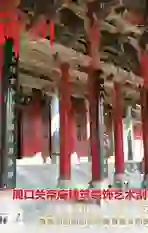绿色建筑结构设计指南
2017-10-15刘正则
刘正则
Abstract
Sustainable development has many definitions, and the landmark one among them was pointed out by the Brundtland Commission in 1987.To apply the concept of sustainable development easily into structure design, a tool for classifying sustainability issues - Three Pillars of Sustainability is widely used.It states that the field of sustainable development can be theoretically divided into three capital stocks:social, natural, and economic.
The objective of this design guide is to help the designers, construction managers, and management officers of the project to consider all issues in a more sustainable approach during the design and implementation phases.The issues about sustainable structure design will be stated, which includes the facility design and measures for protecting surrounding environment during construction.The sustainable issues for implementation and management stage will be discussed.
The principles of sustainable design relevant to structure design which stated in the guidance allow the design teams to connect the design with sustainability better in the design process.The following themes are most commonly considered in sustainable design:energy, materials and resources for construction, landscape and biodiversity, and local characteristics.
Conducting sustainable design with considering these themes is not only an extra measure for the improvement of design.Sustainable design in high quality is critical to reduce long-term damage to the natural environment and to support the social and economic development.Financial profit can be achieved in long term due to sustainable design as well.The structures with sustainable design will have the advantages as below:minimizing the running costs of facilities, reducing harmful environmental effects with better design and construction, and enhancing efficiency of using natural resources.
The design guide mainly addresses the sustainability issues in two stages.The first stage the design guide can be used is the design stages, which are the stages before the structures are constructed.To achieve real sustainable projects, suggestions and recommendations in the design stage will be provided by the document, and the designers can always take sustainability issues into consideration when working in the project.In design, planning of buildings and facilities, selection of materials used, design for high energy-efficiency, and protection measures for natural environment will be the key issues being discussed in the guide.The second stage the document provides advices to is the implementation and management stage which includes the construction of the projects and the management of the facilities after they are open to the public.endprint
Four key stages in the design processes, namely design of buildings and facilities, design for high energy-efficiency, selection of materials used and protection measures for natural environment will be emphasised.Sustainability advices and criteria will be provided as well.The design of structures considered in the guide can be divided into two types, namely the existing buildings, and the new facilities.
High energy-efficiency design can help the projects to reduce environment impacts and long-term energy costs.In order to pursue high energy-efficiency, two primary aspects of design should be applied into projects.Firstly, how to reduce the energy demand of the facilities with sustainable design should be considered, and then the renewable energy can be applied to replace some conventional energy. To reduce the emission of greenhouse gases, decreasing consumption of fossil fuels is a key step in sustainable design.Application of renewable and low carbon energy systems into the projects can significantly minimise the CO2 emissions.Some suggestions about renewable technologies which can be applied into the project.Among these technologies, the wind generators and solar panels are the most common ones used.
Keyword
Sustainable design, selection of materials, high energy-efficiency design,pollution control
Bibliography
ISO 14040.1997.Environmental Management Life Cycle Assessment Principles and Framework.International Standards Organization:Brussels, Belgium
Royal Geographical Society.2009.Guyana:Ecology and Wildlife.[Viewed 21st December 2013]Available at:
Thwink.org.2012.The three pillars of sustainability.[Viewed 23rd December 2013]Available at:
University of Wisconsin Sustainable Management.2012.Understanding sustainability and the triple bottom line[Viewed 24rd December 2013]Available at:
World Commission On Environment And Development.1987.Our common future.Oxford University Press.
